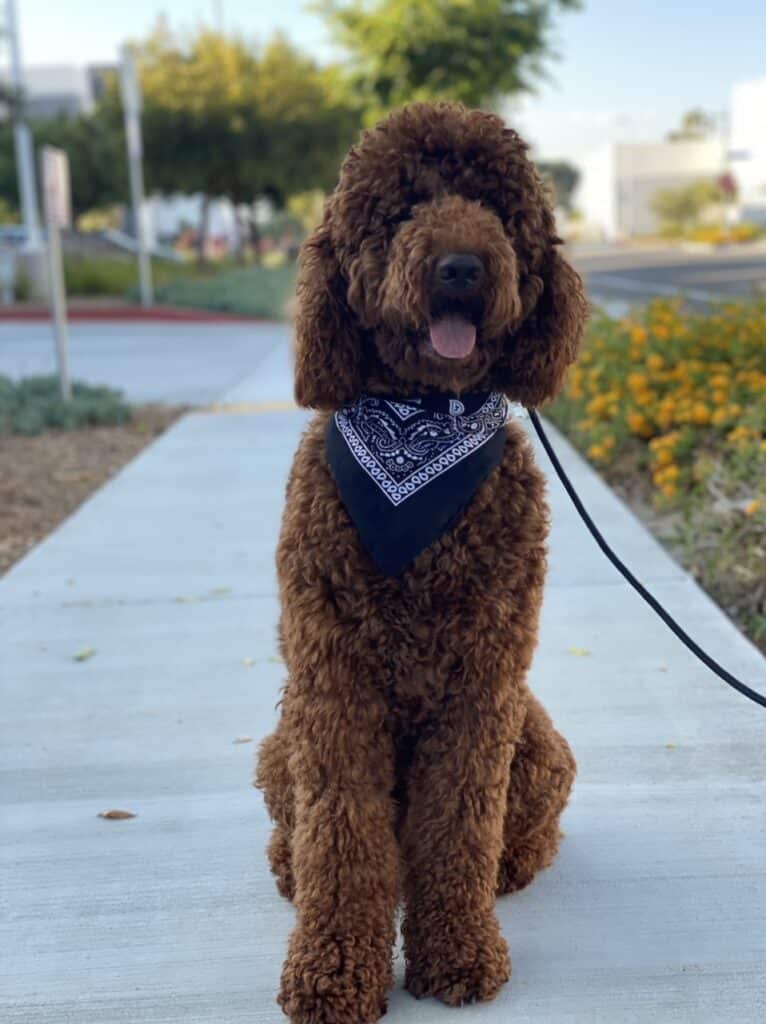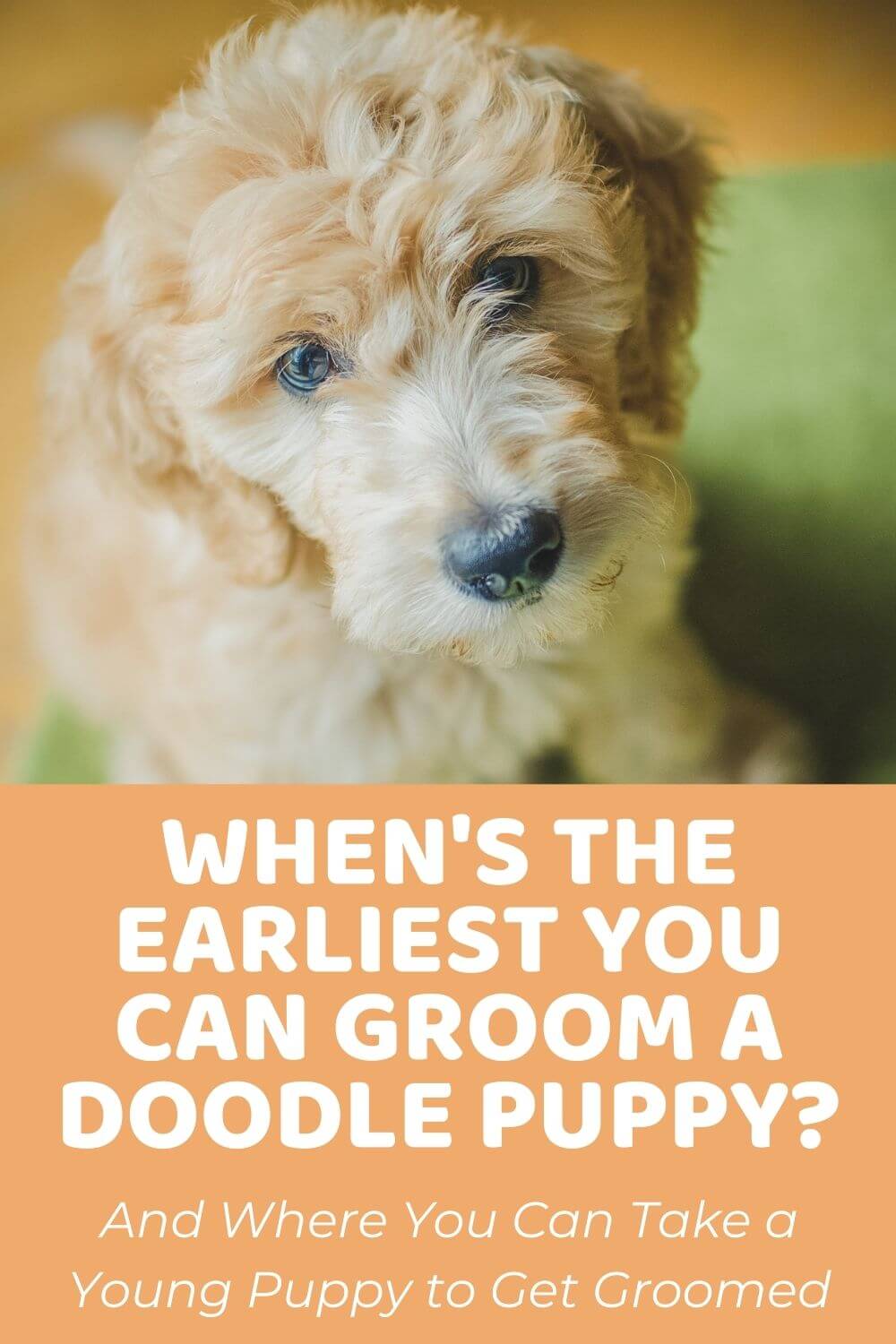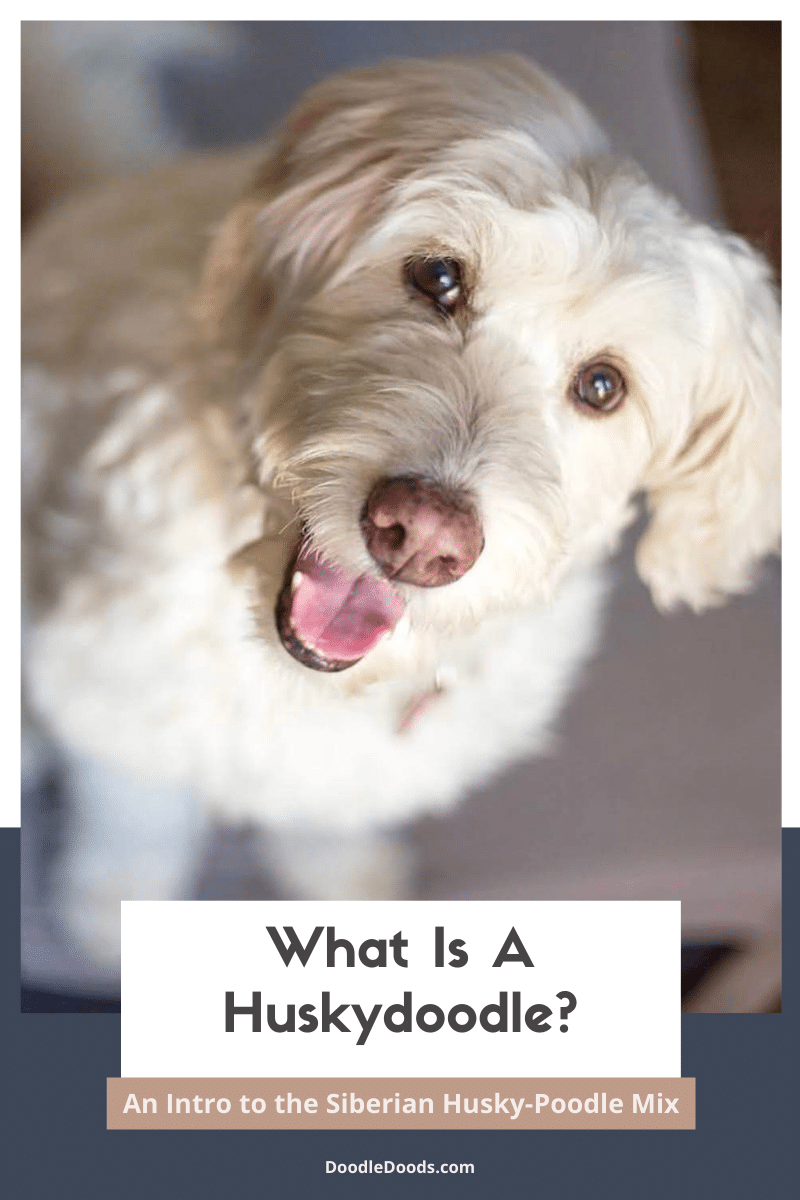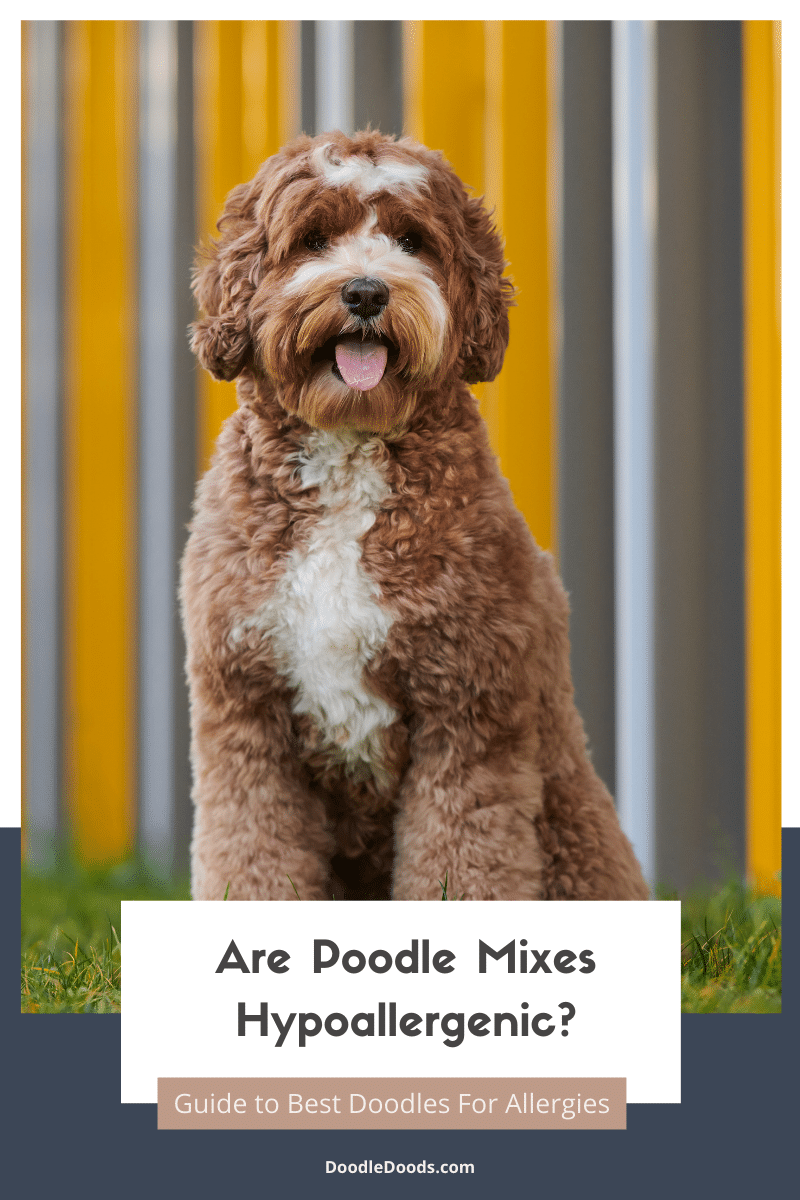Finding the perfect dog for your home can take many months of careful research and breeder searching. If you haven’t considered an Irish Doodle yet, you certainly don’t want to cross them off the list! A cross between an Irish Setter and Poodle, they are energetic, friendly, and devoted dogs.

Also known as Irish Doodle Setter, Irish Poo Setter, Irish Setterpoo, and Irish Setterdoodle, they are not recognized by the American Kennel Club. However, they are rising in popularity as they have just the right look and attitude.
A winning combination of wavy red fur mixed with their happy attitude makes them perfect for cuddles and companionship. This Dood is known to fit in the home quickly, adapting to their new owner’s lifestyle soon after being adopted.
Before adopting any dog, it’s good to have an idea of what they will be like from a puppy to a full-grown dog. This guide covers all the basics of becoming an Irish Doodle owner and what you can expect from Gotcha Day and beyond.
Meet The Irish Doodle Breed
Like most designer breeds (crossbreed between two purebreds), the Irish Doodle is a relatively new breed of dog. They first became notable in the last 30 years as designer dogs became more desirable in the USA.
People used to see crossbreeds as “mutts” and were not preferred. Luckily, things have changed and many now realize how amazing designer dogs can be! Irish Doodles were originally bred due to their hunting and retrieving skills. But the general goal with designer dogs is to get the best traits from both the parent breeds and none of the bad. In the case of the Irish Doodle, you get a perfect blend between an Irish Setter and a Poodle.
Irish Setters are more energetic than a Poodle and the combination helps to balance this out in Irish Doodles. Irish Setters are also wanderers while Poodles are known as homebodies. This helps to keep Irish Doodle’s family-orientated, but not too needy.
Irish Doodles may be considered hypoallergenic depending on what traits they inherit. Irish Setters are moderately shedding dogs while Poodles are known for barely shedding at all. Most Irish Doodles will have low to moderate shedding, but those who are mostly Poodle will have higher chances of being good for those with allergies.
Irish Doodles can live anywhere from 12-15 years, so expect many happy years with your full-grown pup!
The Irish Doodle Appearance
Irish Doodles typically have the most beautiful red coats! Red is the most common color you will find in your search for Irish Doodle puppies. But, you can also find them in apricot, black, or even with a hint of white in their coat. Keep in mind, the rarer the color, the pricier the puppy will be.
Their hair is long and dense, thanks to the Irish Setter, and wavy due to their Poodle parent. Keep in mind that the color and type of coat will vary heavily. As with any designer breed, they can inherit more traits from one purebred parent than the other.
Also depending on the size of the parent the size of the Irish Doodle can vary, but they are classified as a medium-sized dog. Females weigh anywhere from 40 to 60 pounds while males will weigh 50-75 pounds. Their height can be from 24-26 inches tall.
Irish Doodles vs Goldendoodles
Irish Doodles and Goldendoodles are two of the most popular designer dogs around and for good reason! A Goldendoodle is the mix of a Golden Retriever and a Poodle. Just like the Irish Doodle, they are friendly, energetic, social, and fairly intelligent.
While Irish Doodles are known for being red and Goldendoodles for being gold, their color can vary. Goldendoodles can come in golden, cream, black, and red colors depending on the color of the Poodle parent.
Goldendoodles tend to be a slightly larger dog than Irish Doodles and require more grooming. Both may be good for allergies, depending on what they inherit from their Poodle parent.
Overall, the breeds are similar with a few minor differences. When it comes to choosing a puppy that is best for you, your best bet is to ask a breeder. They know their Doods best and will be able to guide you towards your perfect match.
Choosing An Irish Doodle
While all puppies may appear the same on the outside, there is a lot that goes into picking an Irish Doodle. The first thing you need to know is the background of the parents the Irish Doodle puppies have been bred from.
Poodle types include standard, miniature, and toy sizes. Most Irish Doodles are bred from the Standard Poodle, but you can also breed Miniature Poodles with female Irish Setter dogs. This results in a Mini Irish Doodle.
When meeting with prospective breeders, try to meet the parents to get an indication of the personality, size, and appearance of the puppies. This will help you determine what they may be like upon becoming full-grown. Any respectable breeder will also provide a health guarantee for the puppies.
Irish Doodle Generations
You may notice some funny terms such as F1 or F1b when looking for Irish Doodle puppies. These terms indicate the different generations – there are five in total. Depending on what generation your Irish Doodle is, it can have varying allergy tolerances, shedding habits, colors, and coat textures.
| 1st Parent | 2nd Parent | % Irish Setter* | % Poodle* | |
| F1 Irish Doodle (first-generation) | Irish Setter | Poodle | 50% | 50% |
| F1B Irish Doodle (first-generation backcross) | F1 Irish Doodle | Poodle | 25% | 75% |
| F1BB Irish Doodle (first-generation backcross backcross) | F1B Irish Doodle | Poodle | 12.5% | 87.5% |
| F2 Irish Doodle (second-generation) | F1 Irish Doodle | F1 Irish Doodle | 50% | 50% |
| F2B Irish Doodle (second-generation backcross) | F1 Irish Doodle | F1B Irish Doodle | 37.5% | 62.5% |
| F2B Irish Doodle (alternate cross) | F2 Irish Doodle | Poodle | 25% | 75% |
| F3 / Multigen Irish Doodle | F1B Irish Doodle or higher | F1B Irish Doodle or higher | Varies | Varies |
- First Generation (F1): This is the result of an Irish Setter and Poodle being bred directly. Animals that are first generation will have lower health risks but have more unpredictability in terms of appearance and personality.
- First Generation Backcross (F1b): Also considered first generation, this is when you cross a hybrid with either a Poodle or Irish Setter. This results in the traits of one parent being more intensified. The most common case of F1b is 25% Irish Setter and 75% Poodle to make them more allergy-friendly.
- Second Generation (F2): This is the result of breeding two first generation dogs together, so an F1 Irish Doodle mating with another.
- Second Generation Backcross (F2b): The result of breeding an F2 parent with a Poodle, and will result in another 75/25 split.
- F3 and Multigenerational: Much rarer to find, these dogs are bred from second generation parents and further on. They will be more consistent in appearance and personality but may be more prone to health issues.

Irish Doodle Behavior
If you’re searching for a family dog, look no further than the Irish Doodle. They have a youthful enthusiasm that is playful, friendly, and a joy to be around. Smart and energetic, they work well for active individuals and people with energetic children.
Sometimes this playfulness can require some patience on the owner’s side. However, they are loyal and eager to please. They have been favored as therapy dogs due to their loyalty and friendliness.
Irish Doodles make for some of the friendliest companions. They enjoy the company of all humans and dogs – friends and strangers alike. While they are not overly protective of the home, they will bark at anything that raises suspicion while at home or on a walk.
An Irish Doodle may be prone to separation anxiety. Poodles typically are bored when left at home alone, and Irish Setters can be more attached to their parents. If your Irish Doodle inherits this strong attachment, they may have separation anxiety. This can look like barking, howling, chewing, digging, or even going to the bathroom inside.
Ideally, Irish Doodles should not be left alone for more than 3 hours at a time. Socializing them as a puppy will help to prevent separation anxiety. Making sure they interact with new people, dogs, situations, and environments means they will be adaptable, confident, and friendly once full-grown.
Puppies like lots of attention and love, so be sure to dedicate plenty of time to them at the beginning.
Training
When it comes to training, the spectrum for Irish Doodles can be different. Poodles are the second most intelligent dog, falling only behind Border Collies. Irish Setters, however, fall at 35 on the list. This means your Irish Doodle could be easy to train thanks to their Poodle parent or require more patience as their Irish Setter parent.
Those who are difficult to train will become bored or distracted during training. The trick is to keep training sessions short and frequent. You also want to begin training them as early as possible since it may take a little longer.
If they take after their Poodle parent, you will notice they are quick to learn new commands and basic obedience. Most Irish Doodles are known for catching on quickly for house training.
Due to their happy-go-lucky personality, all Irish Doodles should be trained using positive reinforcement. This will establish a healthy relationship between owner and dog without suppressing their natural personality.
Exercise
Originally bred as hunting dogs, Irish Doodles do well with agility and tracking. They like lots of daily exercise due to their high amount of energy. They will get bored if left inside for too long and enjoy an hour-long walk or even run. Since they are social and energetic, trips to dog parks and visits to doggy daycare are great fun.
However, Irish Doodles are adaptable to their owner’s lifestyle and can receive a moderate amount of exercise. With a daily walk, jog, or game of fetch, they can even fair well for apartment living.
Grooming
The coat of an Irish Doodle is probably one of the most unpredictable things about the breed. The tight curls of the Poodle mixed with the long and straight coat of the Irish Setter leave a wide range of possibilities. Irish Doodles range from moderate to high maintenance in terms of their grooming needs.
Typically, they will have wavy hair that can grow quite long. It is up to the owner to decide how they would like their Irish Doodle to be trimmed. If the hair is left long, it will need to be brushed daily to prevent matting. If kept short, brushing 2 to 3 times a week will keep the hair looking perfect.
The most common grooming for Irish Doodles is to keep the body and tail short, and the face and tail a bit longer. If you bathe your Irish Doodle, don’t let them air dry as their fur will be more likely to mat.
While you have an idea of what they will look like when they are a puppy, it can change as they become full-grown. Most owners wait until the puppy is 6-9 months old before they get their first trim to allow the hair to become full.
Medical Concerns
Like most designer dogs, the Irish Doodle breed doesn’t have as many medical concerns as their parents. They are considered fairly hardy dogs. However, here are a few common concerns you may notice with Irish Doodles:
- Hip Dysplasia: More common in larger breeds, it occurs when the hip’s ball and socket do not fit or develop properly. This results in the hip grinding rather than sliding upon movement. Hip dysplasia can lead to the deterioration or complete loss of the joint’s function.
- Bloat: Occurs when the stomach fills with food, gas, or fluid and can put pressure on other organs. This can cause your Doodle to have a harder time breathing. If you think your dog has bloat, take them to the vet immediately as it can worsen quickly. A varied diet with small and more frequent portions can help to prevent it.
- Eye Disorders: The history of the two breeds includes eye diseases and disorders. One of the most common is progressive retinal atrophy which can lead to blindness. Respectable breeders will have their purebred parents tested for any health concerns, including eye disorders.
Like most Doodles, the Irish Doodle is a wonderful family dog and welcome addition to the household. When treated with love and kindness, they will give it right back to you!
Learn How to Care for Your Doodle Puppy!

Perfect for first-time Doodle parents, get ALL your questions answered, including questions new Doodle parents don’t even think to ask.
Plus, get $700 worth of Bonus Materials for FREE, including:- Doodle Parenthood Community and Support Group ($190 value)
- Doodle Puppy Growth Tracker ($20 value)
- EMERGENCY Cheatsheet: When To Call The Vet Immediately ($50 value)
- HELP! Button ($145 value)
- And SO MUCH MORE!












